Back to blog
16 MIN READ
SaaS Customer Retention Strategies, Benchmark Rates & Metrics
PUBLISHED
30 January, 2025

Product Analytics Expert
Keeping customers coming back is one of the biggest challenges in SaaS. That’s where SaaS customer retention comes in. It measures how well your web-based product keeps users engaged over time.
A strong retention rate means lower churn, higher customer lifetime value (LTV), and steady subscription revenue. On the other hand, poor retention signals deeper issues—like confusing onboarding, low product adoption, or lack of user engagement.
In this guide, you’ll learn proven retention strategies, industry benchmarks, key metrics, and the best tools to improve customer retention in SaaS. Let’s dive in and help you keep users around for the long run.
What is SaaS customer retention?
SaaS customer retention is the ability of a subscription-based business to keep existing customers over time by maximizing engagement, satisfaction, and reducing churn.
SaaS customer retention measures how well your web-based product keeps users subscribed and engaged over time. Instead of focusing on attracting new users, retention is about ensuring customers continue finding value in your product—leading to long-term growth and revenue stability.
Why does it matter?
A high retention rate means users consistently find value in your product, renew subscriptions, upgrade plans, and even advocate for your platform. This directly impacts customer lifetime value (LTV), expansion revenue, and net revenue retention (NRR)—three critical metrics that determine long-term SaaS success.
When users stay longer, your business becomes more predictable and profitable. You’re not constantly chasing new customers to replace those who leave. Instead, you’re building deeper relationships with existing users, increasing their spending over time, and reducing reliance on costly new acquisitions.
On the other hand, low retention is a warning sign. It signals that users aren’t getting enough value from your product, leading them to disengage, downgrade, or cancel altogether. While customer churn and retention are two sides of the same coin, improving retention doesn’t just lower churn, it also enhances product engagement and user satisfaction. Users who stick around are more likely to explore new features, integrate your product into their workflows, and provide valuable feedback.
Retention is also far more cost-effective than acquisition. Studies show that acquiring a new customer costs 5–7 times more than keeping an existing one. The more you invest in customer success, product experience, and personalized engagement, the more you maximize revenue without burning resources on constant new customer acquisition.
What is a good SaaS customer retention rate?
Understanding customer retention rates in the SaaS industry is crucial for assessing business health and growth potential. Retention rates can vary significantly based on factors such as company size, industry, pricing model, and business model. Here's a comprehensive overview:
| Metric | Benchmark |
|---|---|
| Top 25% companies Net Revenue Retention (NRR) | 84% |
| Top 25% companies Gross Revenue Retention (GRR) | 74% |
| NRR for ACV > $250,000 | 110% |
| NRR for ACV < $12,000 | 100% |
| Best-in-Class Customer Retention Rate | 85% |
Retention rate benchmarks by company size and annual contract value (ACV):
Small to mid-sized companies (Lower ACVs): Companies with an Annual Contract Value (ACV) of $12,000 or less typically experience a median Net Revenue Retention (NRR) of around 100%. Gross Revenue Retention (GRR) for these companies is approximately 91%. The variance between the top 25% and bottom 25% in this segment is about 12%, indicating a wider range of retention performance. (Source)
Large companies (Higher ACVs): Organizations with ACVs exceeding $250,000 often achieve a median NRR of 110%. GRR in this category is also around 91%, but the variance is narrower at 17%, suggesting more consistent retention performance among larger enterprises. (Source)
B2B vs. B2C SaaS products:
B2B SaaS: Business-to-Business SaaS companies generally enjoy higher retention rates. Approximately 41.1% of B2B SaaS businesses with an Average Revenue Per Account (ARPA) over $500 per month report NRRs exceeding 100%. This is attributed to informed purchasing decisions, longer sales cycles, and greater opportunities for upselling and cross-selling. (Source)
B2C SaaS: In contrast, only about 2.7% of Business-to-Consumer SaaS companies with an ARPA below $10 per month achieve NRRs over 100%. Higher churn rates and fewer expansion opportunities contribute to this lower retention performance. (Source)
Key SaaS customer retention metrics
Tracking the right SaaS customer retention metrics helps you understand how well your web app keeps users engaged and subscribed. These metrics reveal retention trends, signal potential churn risks, and guide decisions to improve customer loyalty. Let’s break down the key ones;
1. Customer retention rate (CRR)
Customer Retention Rate (CRR) measures the percentage of users who continue using your SaaS product over a given period. It’s a direct indicator of how effective your product and customer experience are at keeping users engaged.
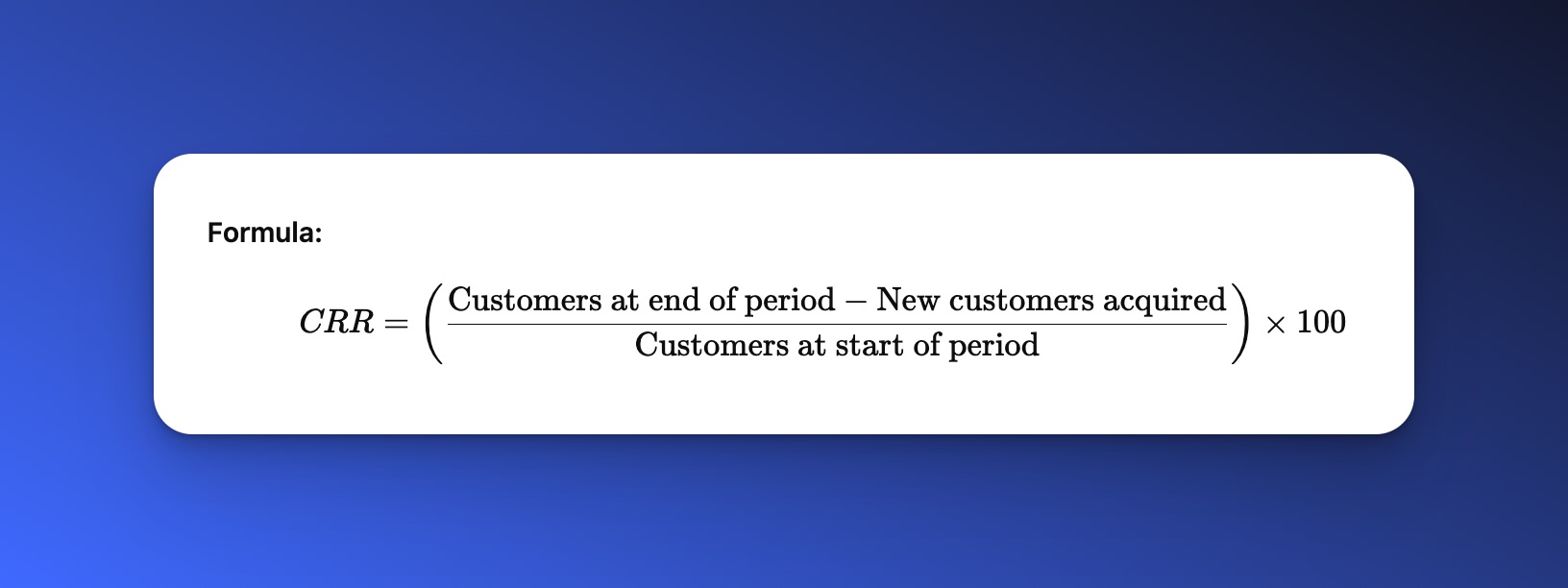

A high retention rate (above 90%) is ideal for enterprise SaaS, while B2B SaaS products typically see 80–90% retention. Lower retention suggests users struggle with adoption or fail to see long-term value in your product. By tracking CRR over time, you can identify user drop-off points and improve engagement strategies.
2. Churn rate
Churn is the opposite of retention. It measures the percentage of customers who cancel subscriptions or stop using your product within a given timeframe. High churn rates indicate problems with user experience, onboarding, or long-term engagement.
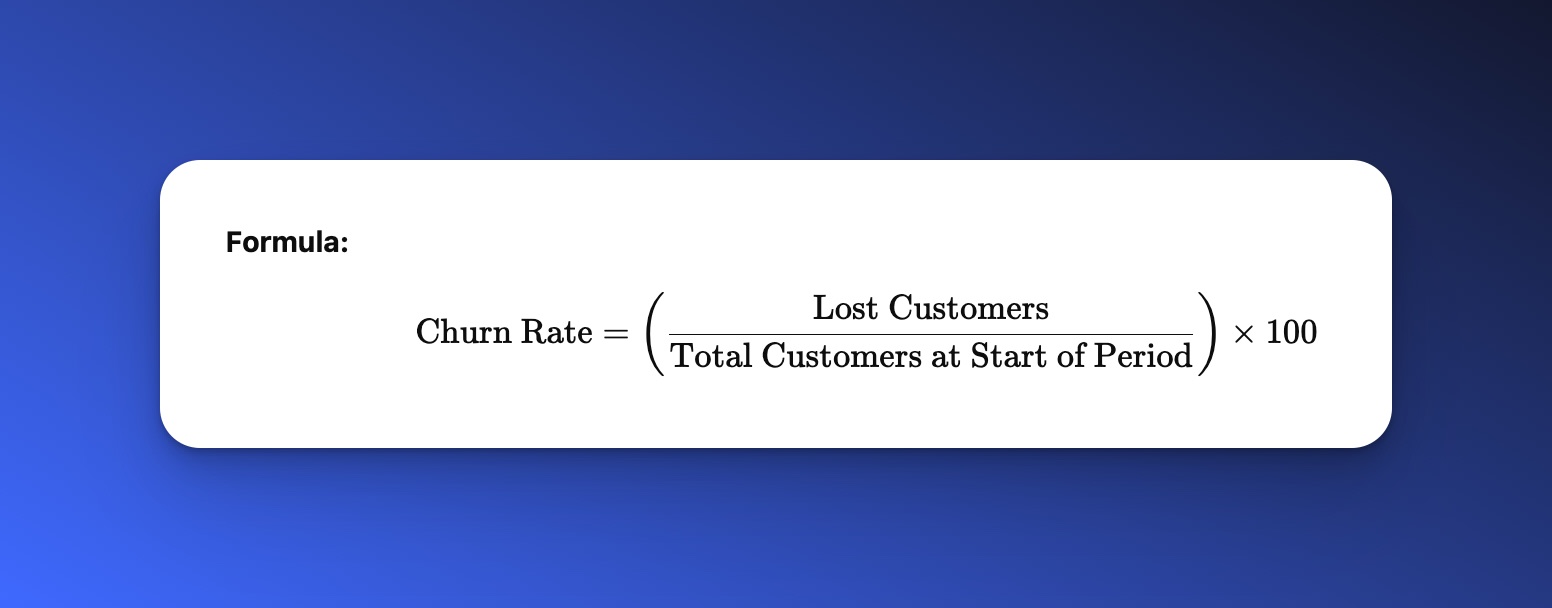

There are two types of churn:
Customer Churn: The percentage of users who stop using the product.
Revenue Churn: The percentage of revenue lost due to downgrades or cancellations.
Analyzing churn trends using product analytics tools helps pinpoint why and when users leave. For example, session replay and heatmaps in UXCam Web can reveal friction points causing users to drop off.
3. Net revenue retention (NRR)
Net Revenue Retention (NRR) measures revenue growth from existing customers by factoring in expansion revenue (upsells, cross-sells) and revenue lost due to churn and downgrades.


An NRR above 100% means your SaaS business is growing revenue without needing new customer acquisitions—a sign of strong customer loyalty and expansion potential.
Companies with high NRR (120%+ in enterprise SaaS) have mastered upselling, cross-selling, and feature adoption strategies. If your NRR is below 100%, improving retention and increasing expansion revenue should be a priority.
4. Customer lifetime value (LTV)
Customer Lifetime Value (LTV) estimates the total revenue a customer generates throughout their relationship with your SaaS product. A higher LTV means stronger retention and long-term profitability.
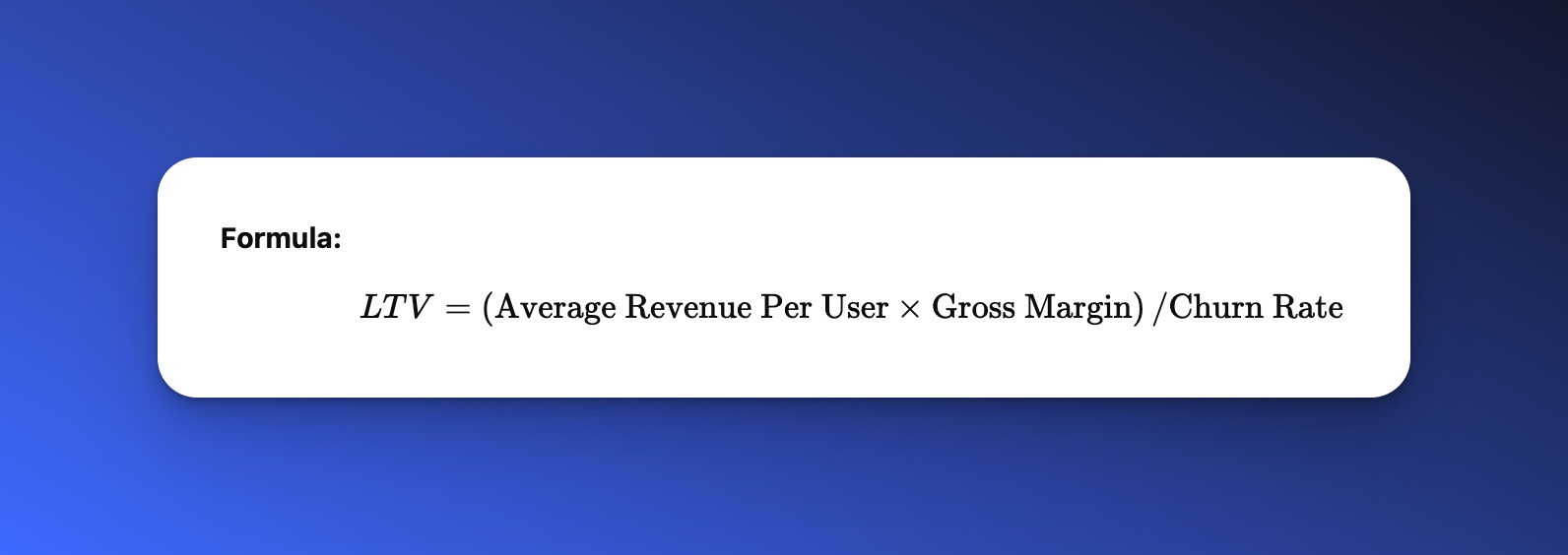

LTV helps you determine how much you should spend on customer acquisition (CAC). A healthy LTV-to-CAC ratio is at least 3:1, meaning customers bring in three times the revenue of their acquisition cost.
If LTV is low, focus on reducing churn, increasing expansion revenue, and improving product engagement.
5. Engagement & adoption metrics
Retention isn’t just about renewals—it’s about how users interact with your SaaS product. Engagement and adoption metrics indicate whether users actively use key features or are at risk of churning.
Key engagement metrics include:
Feature adoption rate – Percentage of users using specific features.
Daily, weekly, and monthly active users (DAU/WAU/MAU) – Measures how frequently users log in.
Session duration – How long users stay active per session.
Stickiness ratio (DAU/MAU) – Higher stickiness means frequent, consistent usage.
A drop in engagement is an early warning sign of churn. You can use UXCam Web help track user behavior patterns, identify underused features, and optimize product flows to improve retention.
SaaS customer retention strategies that work
Customer retention isn’t just about getting users to stay—it’s about making your product indispensable to their workflow. Successful SaaS companies implement proactive strategies that enhance onboarding, encourage repeat engagement, and ensure users continuously find value. Here’s how you can do the same.
Improving onboarding to reduce early churn
The first experience a user has with your SaaS product sets the tone for their entire journey. If onboarding is confusing or overwhelming, users are more likely to abandon your product before they even get started. A frictionless onboarding experience ensures new users quickly understand value, complete key setup steps, and start seeing results.
How to create a frictionless onboarding experience
Use interactive walkthroughs: Guide users through the setup process with step-by-step tutorials, tooltips, and progress indicators. Avoid overwhelming them with too many options at once.
Provide contextual guidance: Offer in-app prompts or chat-based assistance that provides help only when and where it’s needed.
Reduce manual effort: Minimize form fields, offer pre-filled suggestions, and allow integrations that streamline initial setup.
Not all users will explore your platform on their own. Without clear guidance, they might never discover the core features that make your product valuable.
Guides and tooltips help users navigate key actions without feeling lost.
Checklists give them a structured way to complete their setup.
Video tutorials provide a visual, step-by-step demonstration of key workflows.
However, Eeven with a well-designed onboarding process, some users will still drop off before reaching activation. The key is to identify where and why they’re leaving.
With product analytics tools like UXCam Web, you can track onboarding funnel completion rates and identify steps where users drop off. `Then, use session replay to see exactly how users interact with your onboarding flow and pinpoint friction points and areas of confusion. By continuously refining onboarding based on real user behavior, you can improve activation rates and prevent early churn.
SaaS Customer Retention Strategies: Actionable Steps
Retaining customers in a SaaS business isn’t just about preventing churn—it’s about creating a seamless, engaging, and habit-forming experience that keeps users coming back. The best retention strategies focus on improving onboarding, enhancing product stickiness, and continuously optimizing the user journey.
Here’s how you can put these strategies into action.
1. Improve onboarding to reduce early churn
The first few interactions a user has with your SaaS product can determine whether they become a long-term customer or churn within days. A frictionless onboarding process ensures users see value quickly and engage with your product from the start.
Simplify the onboarding process
A confusing or overwhelming onboarding experience can drive users away before they even get started. Guide users through key setup steps with a structured, easy-to-follow flow. Instead of bombarding them with too much information at once, introduce features gradually and contextually.
For example, if your SaaS platform requires multiple integrations, allow users to connect the most critical ones first and set up the rest later. A phased approach prevents cognitive overload and ensures a smoother transition into the product.
Use interactive guidance
Many users prefer to explore a product on their own rather than reading long documentation. Interactive tooltips, step-by-step walkthroughs, and checklists help users discover essential features at the right moment.
A well-designed onboarding experience should feel intuitive, not like a training session. By embedding in-app guidance, you minimize reliance on customer support and reduce the likelihood of users dropping off due to confusion.
Track onboarding drop-offs and optimize user activation
Even with a well-structured onboarding flow, some users will still abandon the process. The key is to understand where and why they drop off.
With product analytics tools like UXCam Web, you can track where users abandon onboarding (e.g., skipping key steps, closing the app early), how they interact with tooltips and walkthroughs and common friction points that delay activation.
By analyzing session replays, you can see onboarding from the user’s perspective and make data-driven improvements that help new users activate faster.
2. Increase product stickiness with usage-based retention tactics
Once users complete onboarding, the focus shifts to ensuring they engage with your product regularly. The more frequently users return, the less likely they are to churn.
Create habit loops to encourage repeat engagement
Users are more likely to stay if they develop a habit around using your product. A habit loop consists of four key elements:
Trigger – A notification, email, or in-app prompt reminding users to take action.
Action – The user engages with a key feature (e.g., completes a task, uploads data).
Reward – Immediate feedback, such as a success message, progress update, or achievement badge.
Investment – The user customizes settings, saves preferences, or integrates third-party tools, increasing their commitment to the product.
For example, a project management tool might send an automated reminder (trigger) to update a task (action), followed by a completion message (reward), and then suggest saving a workflow for future projects (investment).
Building habit loops encourages consistent usage, which strengthens retention over time.
Personalize the user experience
A product becomes irreplaceable when it adapts to the user’s needs. Personalization helps keep users engaged by showing them relevant data and recommendations.
Personalized dashboards display the most important metrics and actions based on past usage. Instead of a one-size-fits-all interface, users should see content tailored to their specific workflows.
Similarly, feature discovery prompts can introduce users to underutilized functionalities that match their behavior. If a user frequently accesses a certain tool, suggest complementary features that enhance their workflow.
By making the product feel custom-fit, you encourage deeper engagement and long-term retention.
Analyze user behavior to improve product flows
Even highly engaged users may encounter friction points that disrupt their experience. The challenge is identifying these issues before they lead to churn.
Session replay tools like UXCam Web allow you to:
Watch real user sessions to understand how they navigate the product.
Identify points of frustration, such as repeated clicks on non-functional elements or abandoned workflows.
Analyze drop-off trends in key areas, such as reporting dashboards or checkout flows.
By continuously optimizing the user experience based on real behavior, you remove roadblocks and ensure that engagement remains high.
3. Personalize customer communication & lifecycle nurturing
Retention doesn’t end after onboarding. To keep users engaged long-term, you need targeted communication that reinforces product value at every stage of their journey. Personalized, data-driven messaging helps keep users active, reduces churn risk, and strengthens relationships with your customers.
Engage users with data-driven messaging
Users engage more when they receive timely, relevant messages tailored to their behavior. A generic email blast won’t move the needle—but a personalized in-app message, push notification, or email based on a user’s activity can.
For example, if a user hasn’t logged in for a week, a gentle nudge reminding them of unfinished tasks can bring them back. If they recently explored a new feature but didn’t use it, a short tutorial video might encourage adoption.
Automating these messages through lifecycle email sequences, push notifications, and in-app popups ensures users stay connected without feeling overwhelmed.
Segment users with cohort analysis
Not all users behave the same way. Some engage frequently, while others show early signs of disengagement. Instead of treating all users equally, segment them into cohorts based on behavior and personalize retention efforts accordingly.
Highly engaged users - Send feature announcements, advanced usage tips, and upsell opportunities.
At-risk users (low engagement, declining activity) - Offer incentives, onboarding refreshers, or personalized support.
New users struggling with activation - Identify where they drop off and guide them with tailored tutorials.
Cohort analysis helps you identify patterns in user retention and proactively address drop-off points before they lead to churn.
Provide proactive customer support
Many users leave simply because they get stuck and don’t receive timely help. Proactive support ensures issues are resolved before they escalate into cancellations.
Instead of waiting for users to submit a ticket, use automated help desk messages, chatbots, and AI-driven support systems to assist users in real time.
For instance, if a user repeatedly fails to complete an action—like setting up an integration—an in-app chatbot can step in and offer help. Similarly, triggered emails or in-app prompts can provide troubleshooting guidance based on detected errors.
By anticipating user needs and offering support before frustration sets in, you create a smoother user experience that keeps customers engaged.
4. Leverage customer feedback to drive product iteration
Retention isn’t just about keeping users—it’s about continuously improving the product to match their evolving needs. Customer feedback provides the insights needed to refine the experience and prevent churn.
Collect insights with surveys, NPS, and interviews
The best way to understand why customers stay—or why they leave—is to ask them directly. Surveys, Net Promoter Score (NPS), and direct user interviews provide valuable feedback on what’s working and what’s causing frustration.
Short in-app surveys can capture real-time feedback on features.
NPS surveys identify loyal users and uncover detractors who may be at risk of churning.
User interviews provide deeper insights into common pain points and feature requests.
Implement feedback loops for continuous improvement
Collecting feedback is only valuable if you act on it. A strong feedback loop ensures that user insights lead to meaningful product updates.
If multiple users report the same friction point, address it in the next release. If NPS data shows low satisfaction in a particular area, investigate why and iterate accordingly.
Importantly, communicate these improvements back to users. When customers see that their feedback directly influences the product, they feel more invested—making them less likely to churn.
Identify UX pain points with session replays
Not all feedback comes in the form of direct responses. Sometimes, user frustration is silent—they struggle with navigation, abandon key actions, or get stuck on a confusing interface.
Session replay tools like UXCam Web allow you to observe real user sessions and detect usability issues before they become churn risks.
By combining qualitative feedback from surveys with quantitative behavior analysis, you can refine the user experience, reduce friction, and improve overall retention.
5. Drive expansion revenue with upselling & cross-selling
Retention doesn’t just protect revenue—it also presents opportunities to expand revenue through upselling and cross-selling. Engaged users are more likely to see value in premium features or complementary add-ons.
Create seamless upsell and cross-sell opportunities
Upselling and cross-selling should feel like natural extensions of the user experience, not aggressive sales tactics. The key is to introduce these opportunities at the right moment—when a user is already engaged and seeing value.
For example:
A free-tier user who consistently hits feature limits might be shown an upgrade prompt.
A power user exploring analytics reports might receive a recommendation for an advanced reporting add-on.
A team that collaborates frequently could be nudged toward a multi-user plan.
The best upsell and cross-sell opportunities enhance the user's workflow, making the upgrade a logical next step rather than an unnecessary purchase.
Use product usage data to identify upsell candidates
Not every user is ready for an upgrade. Targeting the right users with the right offer increases conversion rates.
By analyzing product usage patterns, you can identify:
Users frequently engaging with a limited feature, indicating they need an upgrade.
Customers who hit usage caps, signaling readiness for a higher-tier plan.
Engaged teams who would benefit from collaboration-focused add-ons.
Data-driven upsell strategies ensure that you’re offering additional value, not just pushing sales.
Best tools to track & improve SaaS customer retention
The right tools help SaaS companies track user behavior, measure customer sentiment, and automate engagement strategies to reduce churn. Below are the top tools categorized by function, along with their role in improving retention.
| Tools | Best For |
|---|---|
| UXCam Web | Product analytics & retention insights |
| Delighted | Customer feedback & NPS surveys |
| HubSpot | CRM & customer lifecycle management |
| Customer.io | Email & messaging automation |
1. UXCam for Web
Best for: Product Analytics
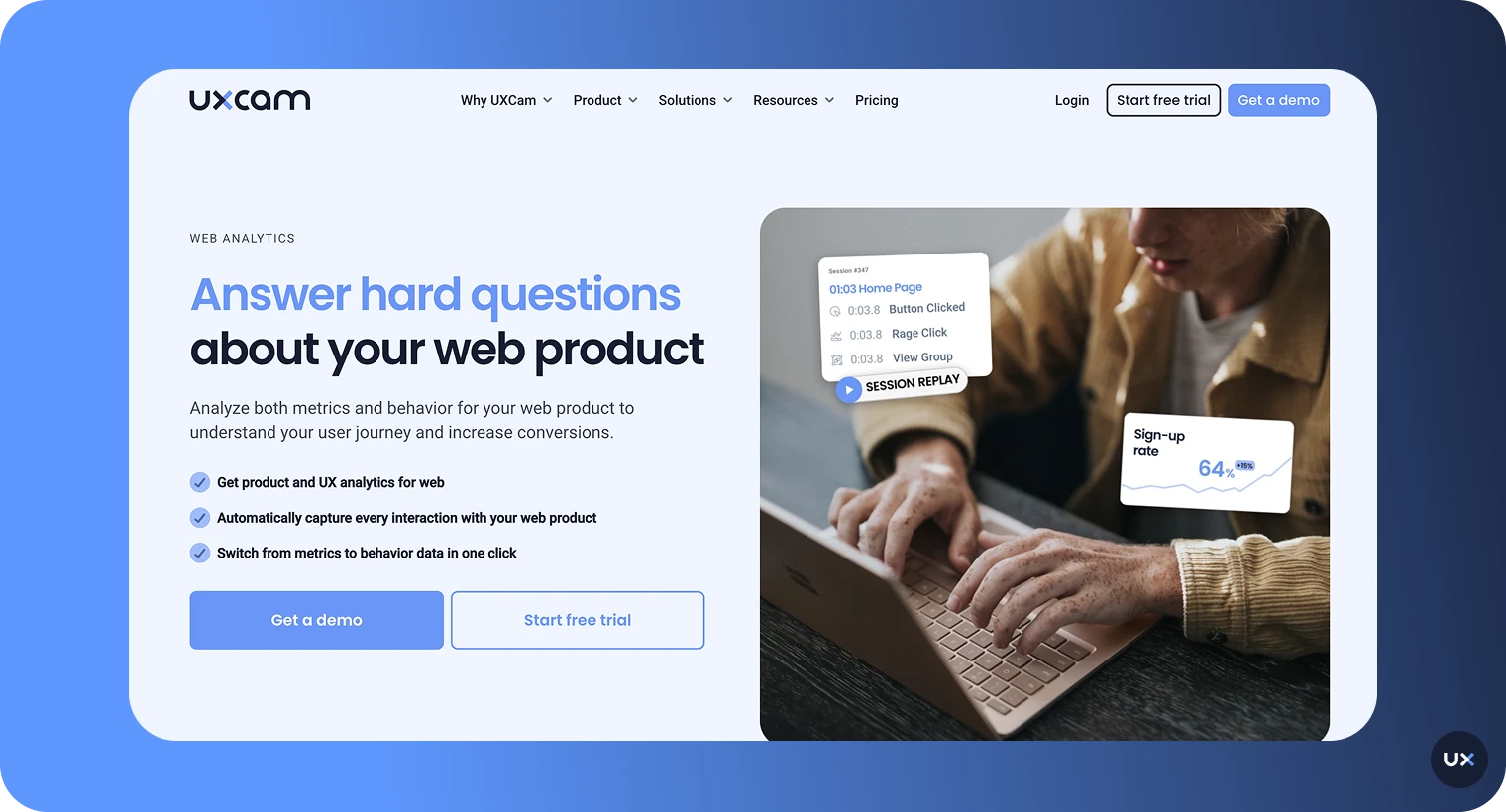
UXCam Web is a product analytics platform that helps SaaS teams understand how users interact with their platform, where they face friction, and what leads to churn. It provides session replays, heatmaps, user journey tracking, and feature usage analytics to give a complete picture of user behavior.
Understanding why users drop off is essential to preventing churn. UXCam Web enables SaaS teams to:
Identify usability issues that lead to frustration.
Track feature adoption to see what keeps users engaged.
Analyze onboarding completion rates to optimize user activation.
Pinpoint retention bottlenecks with funnel analysis.
UXCam Web you have access to;
Session replays – Watch real user sessions to see how they interact with your product, where they struggle, and what leads to drop-offs.
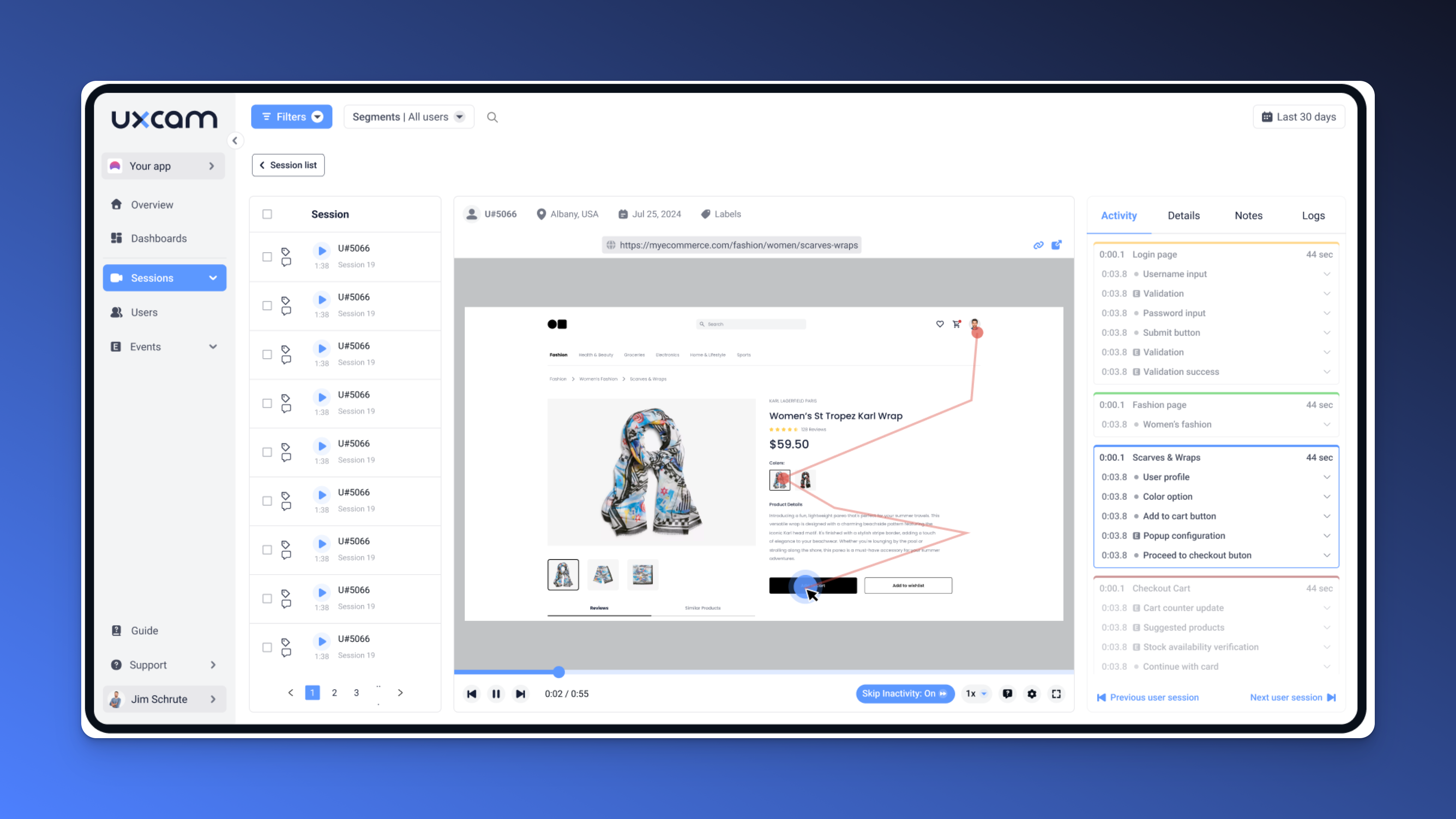

User journeys & funnels – Analyze how users navigate your product, pinpointing steps where they drop off so you can optimize key workflows.
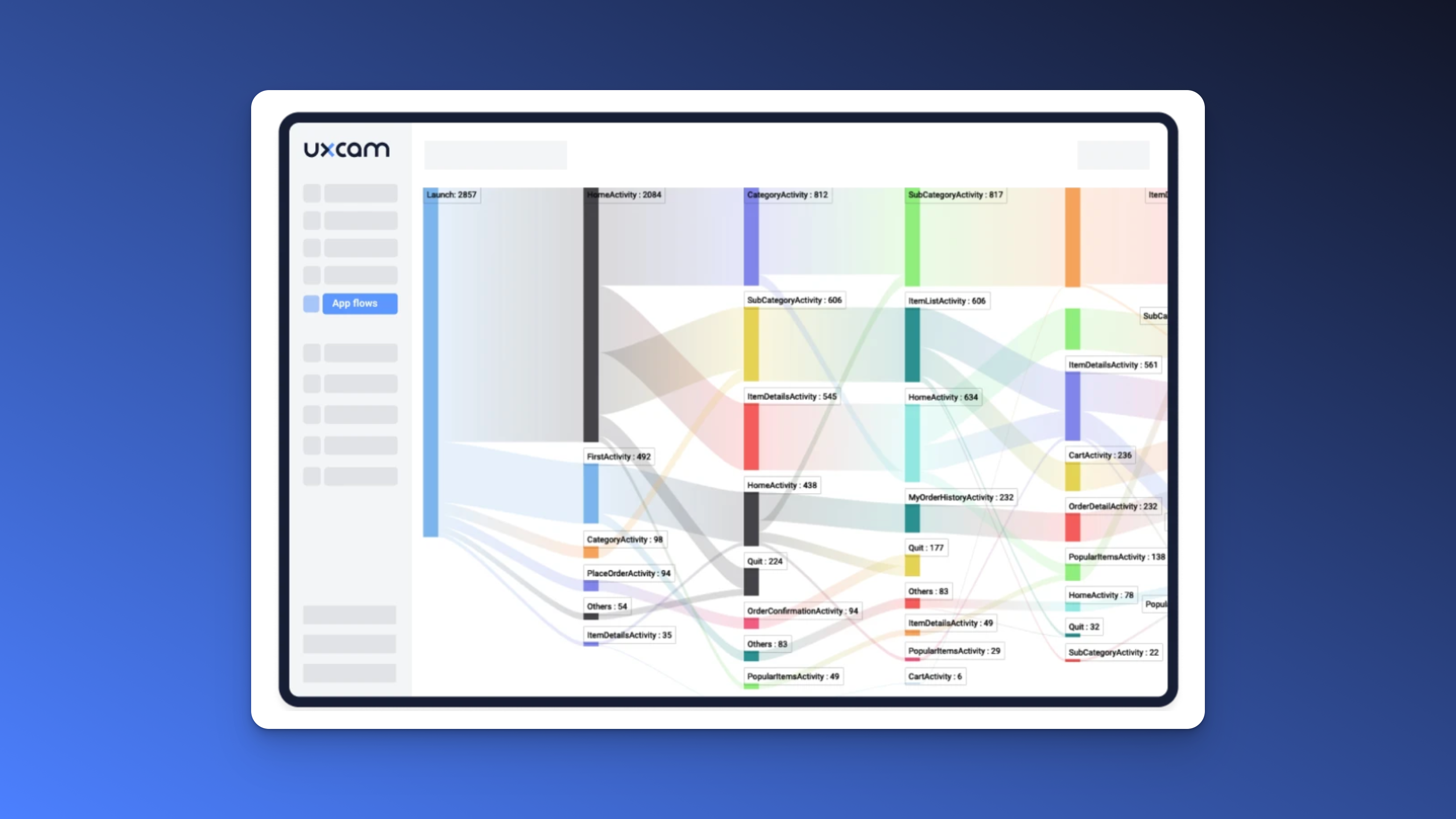

Retention cohort analysis – Compare how different user segments behave over time, so you can refine onboarding and engagement strategies.
Customizable dashboards & alerts – Get real-time alerts on user behavior changes, drop-offs, or unusual trends so you can take proactive action before retention issues escalate.
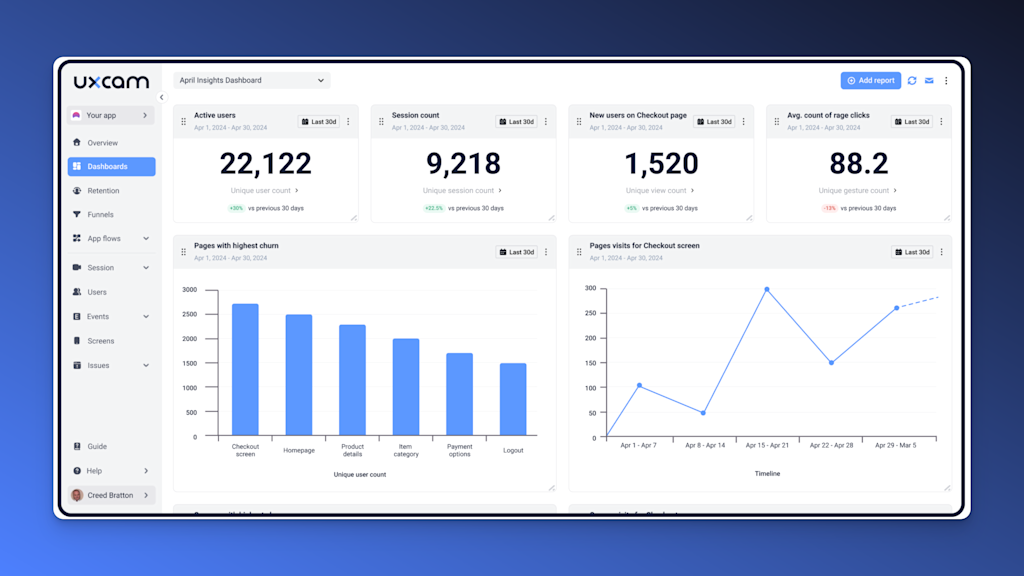

Conversion & drop-off insights – Pinpoint exactly where users abandon key actions (like upgrading, subscribing, or completing a workflow) and optimize those moments.
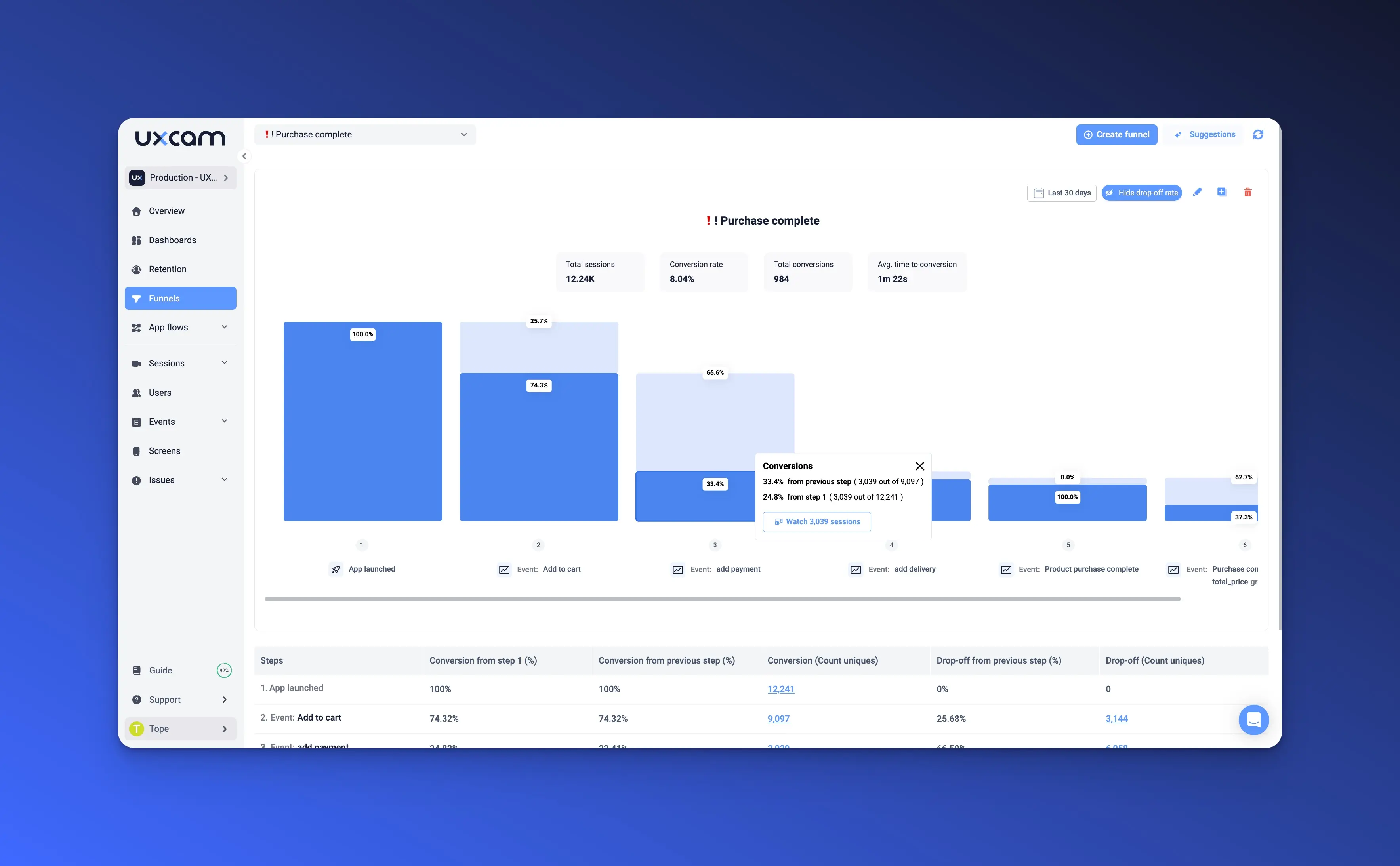
User segmentation & behavior analysis – Segment users by plan, engagement, or lifecycle stage to tailor retention strategies based on their needs.

User Frustration Signals (rage clicks, dead cicks, error tracking) – Detect when users experience friction, frustration, or errors. Fix usability issues quickly to prevent churn.
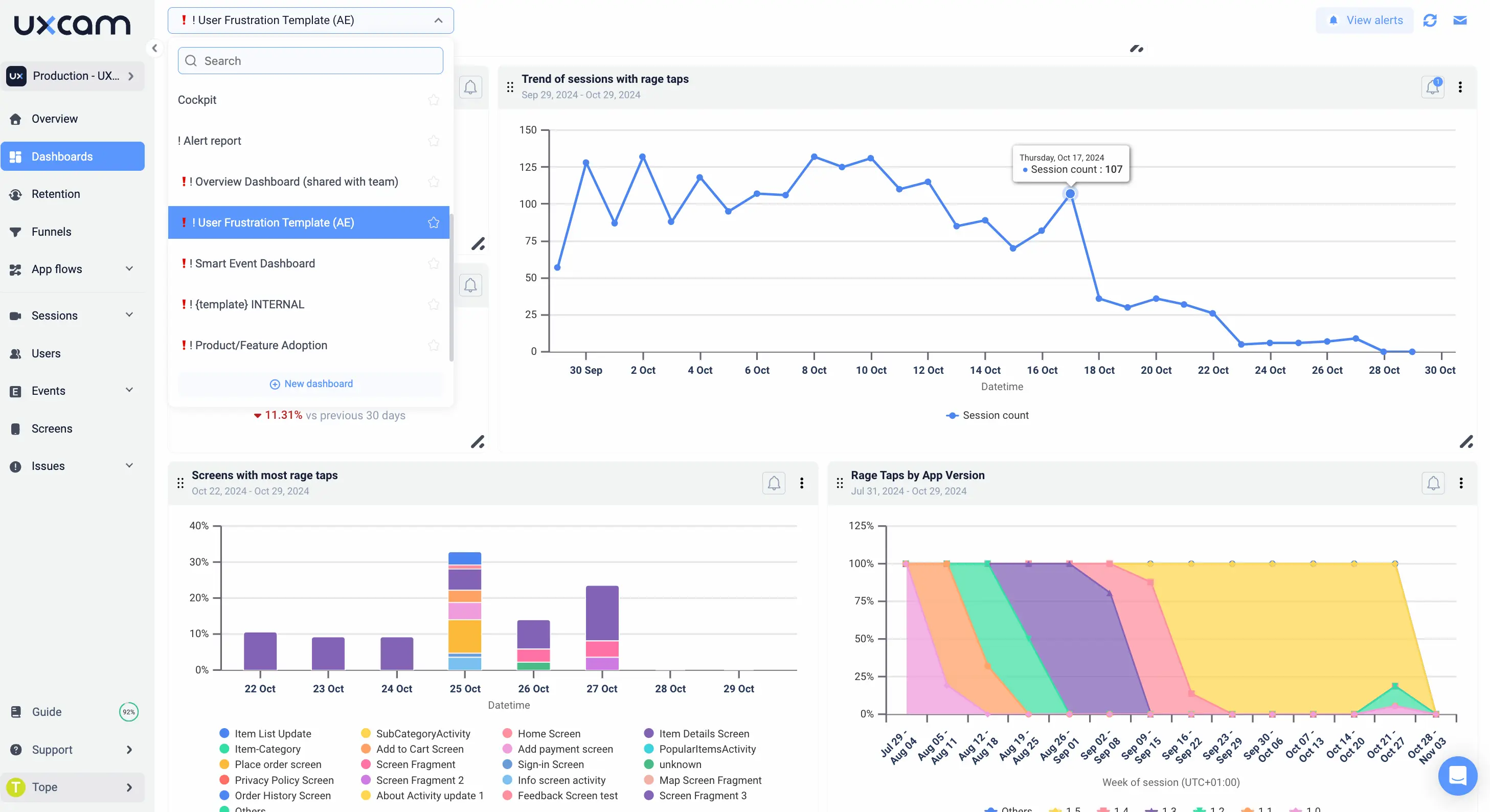
Feature Usage Tracking – Measure which features users engage with the most (or ignore), helping you improve adoption and retention.
With data-driven insights from UXCam Web, SaaS companies can proactively improve user experience and retention strategies based on real user behavior.
2. Delighted
Best for: Customer Feedback & NPS Surveys
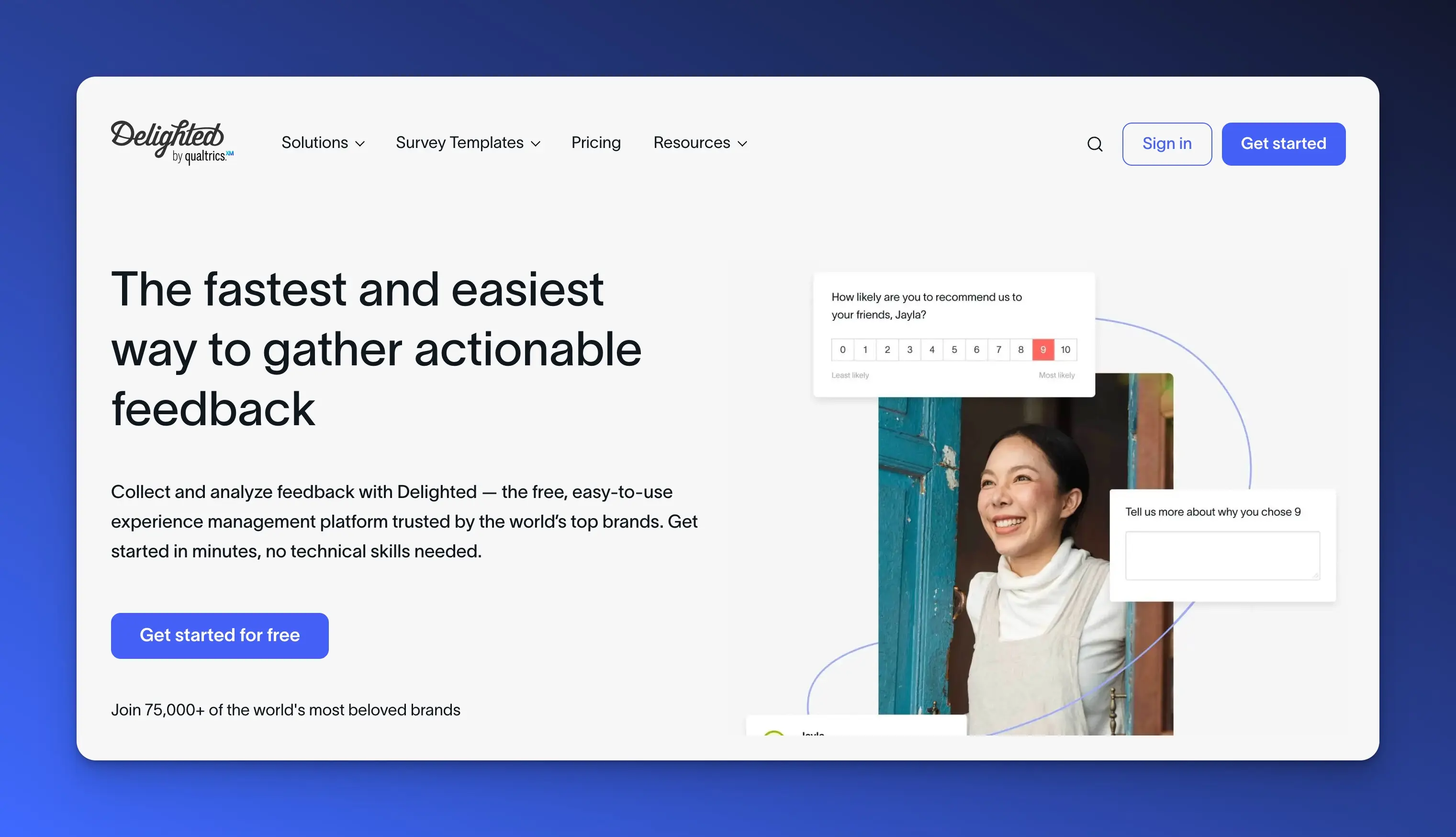
Delighted is a customer feedback and Net Promoter Score (NPS) survey tool that allows SaaS teams to gather real-time insights on customer sentiment, satisfaction, and loyalty. It provides automated surveys via email, in-app, and SMS to capture feedback seamlessly.
Customer feedback reveals why users stay and why they leave. Delighted helps SaaS companies:
Track NPS trends to measure overall satisfaction and predict churn risk.
Segment feedback by user cohorts (e.g., power users vs. disengaged users).
Identify at-risk customers and act on their concerns before they churn.
Use qualitative insights to inform product development and retention strategies.
Pairing Delighted with UXCam Web gives SaaS teams both quantitative behavior data and qualitative user feedback, allowing them to address retention challenges effectively.
3. HubSpot
Best for: CRM & Customer Lifecycle Management
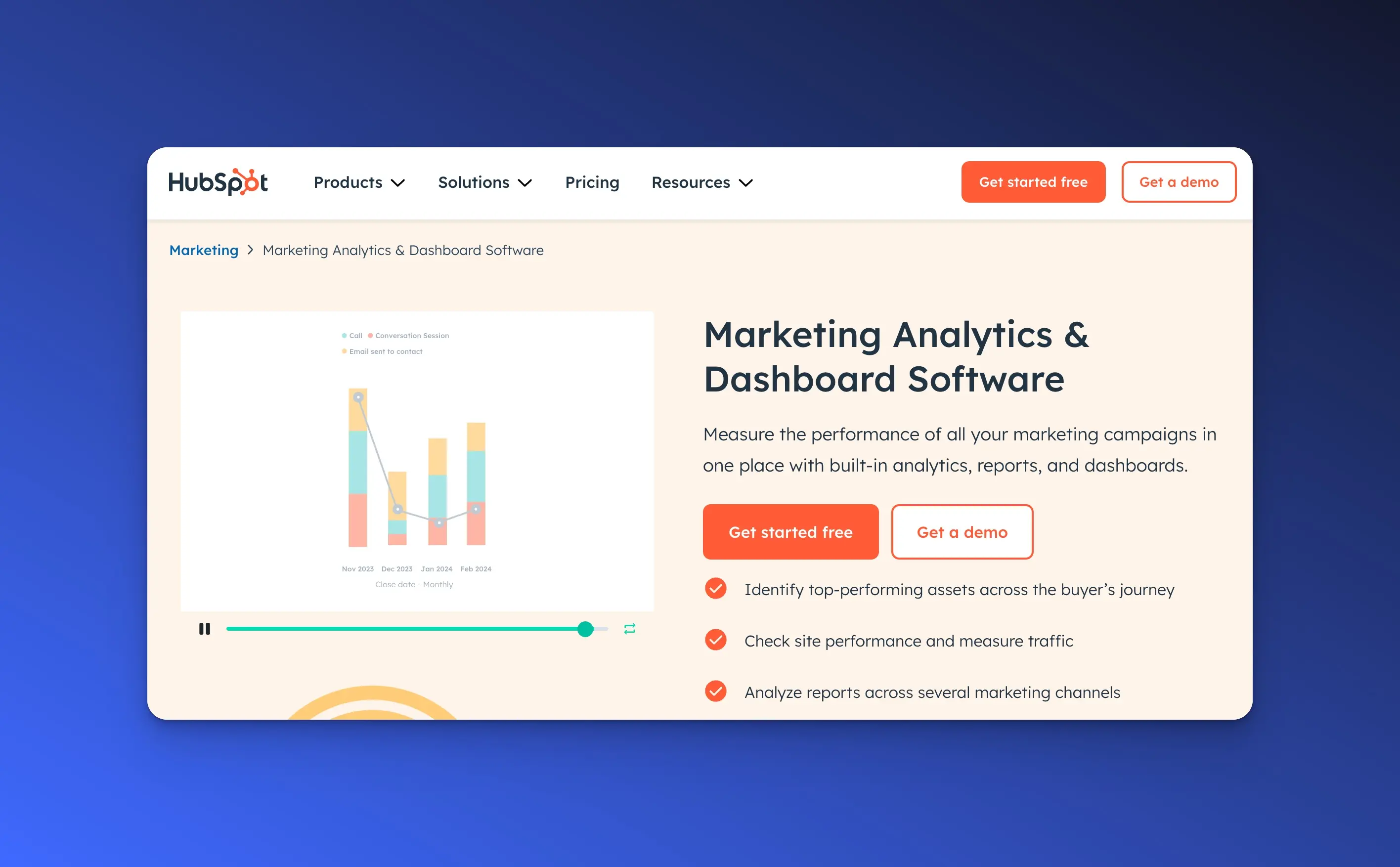
HubSpot is a customer relationship management (CRM) and customer success platform that helps SaaS companies track user engagement, automate follow-ups, and manage customer relationships throughout the lifecycle.
Effective customer lifecycle management reduces churn by ensuring users receive ongoing support and engagement. HubSpot helps SaaS teams:
Monitor user engagement levels and flag at-risk customers.
Automate retention campaignsfor users with declining activity.
Manage renewal workflows to prevent last-minute cancellations.
Centralize customer data to align sales, support, and product teams.
By integrating HubSpot with UXCam Web, SaaS companies can correlate product usage data with customer engagement metrics, leading to smarter retention strategies.
4. Customer.io
Best for: Email & Messaging Automation
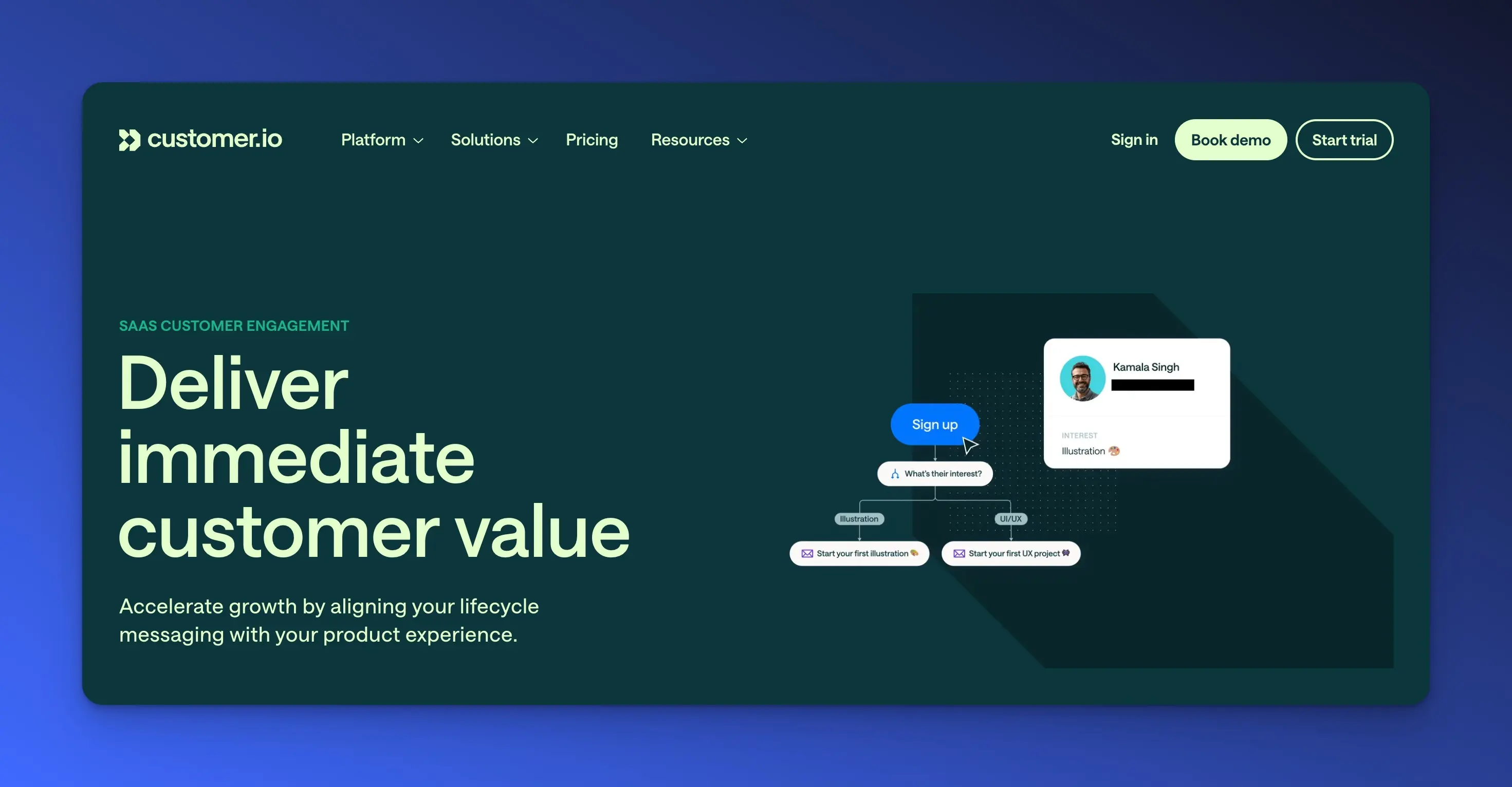
Customer.io is a behavior-driven email and messaging automation platform that allows SaaS teams to send personalized, real-time messages based on user activity and engagement trends.
Many users disengage gradually before they cancel. Trigger-based messaging helps re-engage users before they churn. Customer.io enables SaaS teams to:
Send lifecycle emails to guide users through onboarding and feature adoption.
Trigger in-app messages when users struggle with a key feature.
Re-engage dormant users with targeted offers or usage reminders.
Automate renewal reminders to reduce involuntary churn.
When combined with UXCam Web’s behavioral analytics, Customer.io helps SaaS teams deliver data-driven, personalized messaging that keeps users engaged.
Conclusion: Build a retention-first SaaS strategy
Customer retention isn’t just a metric—it’s the foundation of sustainable SaaS growth. The most successful companies don’t just track churn; they actively optimize onboarding, enhance product stickiness, personalize engagement, act on customer feedback, and drive expansion revenue.
Retention benchmarks help you measure success, but real improvements come from data-driven strategies. Understanding how users engage, where they drop off, and what keeps them coming back allows you to make informed decisions that strengthen customer loyalty.
That’s where product analytics plays a crucial role. UXCam for Web help you track user behavior, identify friction points, and refine your product experience—ensuring that your retention efforts are backed by real insights, not guesswork.
Ready to take a data-driven approach to retention? Try UXCam for free today and start optimizing your SaaS customer retention strategy.
You might also be interested in this;
How To Collect User Feedback for SaaS & Best Tools
SaaS Metrics Dashboard Examples and When to Use Them
Top 14 SaaS Product Usage Metrics and How to Improve Them
SaaS Customer Journey Mapping - A Comprehensive Guide
Top 11 SaaS Analytics Tools and Software
How to do Website Usability Testing
Website UX Audit - Steps, Checklist and Best Tools
How to Track User Activity on Website - Guide for Product Teams
AUTHOR

Tope Longe
Product Analytics Expert
Ardent technophile exploring the world of mobile app product management at UXCam.
What’s UXCam?
Related articles
Website Optimization
AI Conversion Rate Optimization - What It Is & How It Works
Boost your website performance with AI Conversion Rate Optimization. Learn how AI tools analyze behavior, personalize UX, and increase conversions...

Tope Longe
Product Analytics Expert
Website Optimization
10 Best Landing Page Optimization Tools
Boost conversions with the 10 best landing page optimization tools. Compare features, pricing, and use cases for growth-focused...

Tope Longe
Product Analytics Expert
Website Optimization
How to Improve User Experience on Website
Improve website UX with 10 proven tips for product managers. Learn how to spot issues, reduce friction, and boost conversions using UXCam for...

Tope Longe
Product Analytics Expert